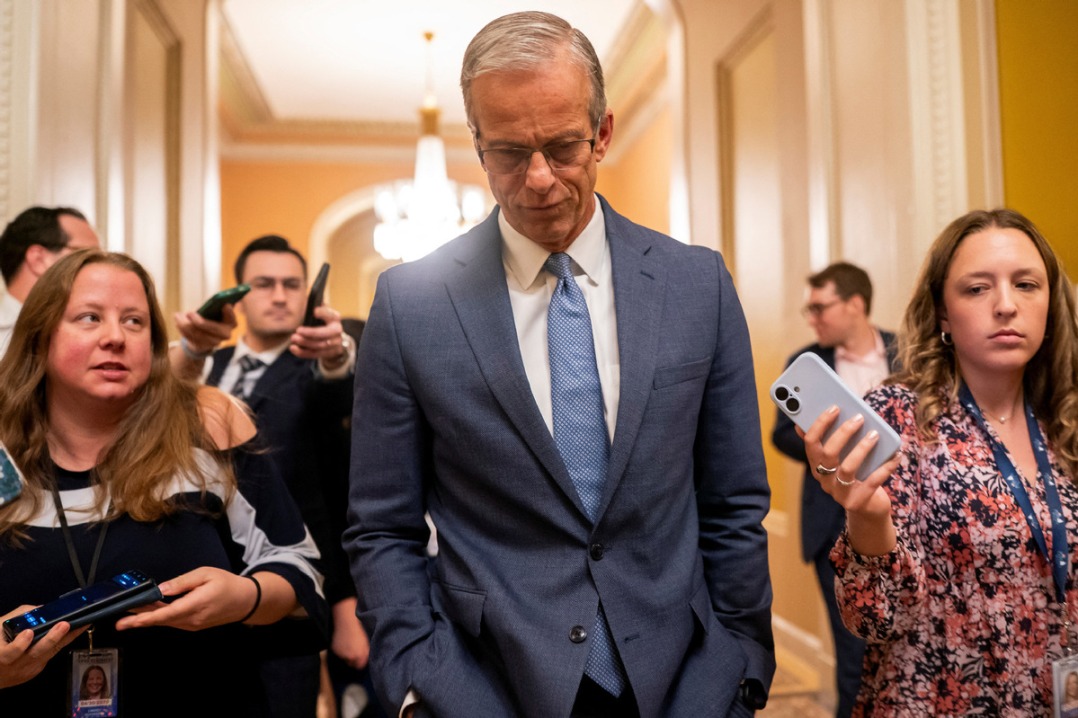'Immense requirements' bearing down on providers and states as Senate passes record Medicaid cuts
The Senate passed its version of a massive 10-year reconciliation bill Tuesday, keying up a new fight in the House, where some Republicans said they remain ardently opposed to the bill’s steep Medicaid cuts.
It also has sparked new worry among provider groups, whose strong opposition to the bill’s Medicaid provisions were widely recognized but still defeated. Vice President JD Vance was needed to cast a tie-breaking vote in the 51-50 Republican victory that featured no Democrat crossovers.
The bill is slated to cut $940 billion from Medicaid over 10 years, according to the nonpartisan Congressional Budget Office. It is expected to push nearly 12 million Americans off of their health insurance plans and force states to cut back Medicaid services — and likely reduce provider payments to compensate for changes, the CBO said.
“This bill is overall incredibly harmful to older adults and the providers who serve them, and we would urge a ‘no’ vote in the House. If this bill becomes law, states will see immense requirements and costs shifted into their budgets” Mollie Gurian, vice president, policy and government affairs for LeadingAge, said in an email to McKnight’s Long-Term Care News Tuesday evening.
“States will invariably be faced with imposing limits on optional services like home- and community-based services, reducing rates paid to providers, or reducing the number of people they are serving,” she added. “Money out of the healthcare system doesn’t make healthcare cheaper. It shifts costs to other payers like private insurance.”
The American Health Care Association/National Association for Assisted Living said Tuesday that it was monitoring the progress of the bill as it moves to the House, noting that the process is far from finished.
One unifying change this week is the Senate and House bills are now aligned on the federal nursing home staffing mandate. Each calls for a 10-year delay in implementation and enforcement.
Among changes worrisome to the sector, however, are proposed limits on provider taxes that would reduce federal payouts to the states by about $275 million over the next decade. While advocates won a carveout for skilled nursing and immediate care providers, reductions in the 41 states with Medicaid expansion will mean less going into the Medicaid system locally, plus a vastly reduced federal match.
The Senate’s approach to provider taxes is more aggressive than that initially passed by the House, which now must take up the reconciliation bill again. At least a dozen Republicans there have said they will vote against the Senate-approved Medicaid cuts.
Providers quickly turned their lobbying efforts back to House Republicans, who approved their version of the bill by a single vote in May.
In addition to the provider tax issues, the bill also reduces retroactive Medicaid payments for new enrollees to 60 days, instead of the current 90 days. The House bill would reduce the window to 30 days, which skilled nursing providers have said could lead them to deny care to Medicaid-pending patients.
Thanks to last-minute maneuvering, the Senate bill also includes a 2.5% addition to the 2025 Physician Fee Schedule Conversion Factor — though it doesn’t go as far as the House version to begin tying those rates to the cost of inflation.
That “is another positive step which will mitigate reductions that we expect CMS to propose for 2026 pay for physicians and other practitioners, including therapists, that provide services to those in long-term care facilities,” ADVION CEO Cynthia Morton told McKnight’s Tuesday. “We are still concerned about additional Medicaid policy changes and reductions in the bill that could have a spillover effect on those who need long-term care services and supports that Medicaid provides.”
While the focus of the bill has largely been on its Medicaid provisions, it’s becoming clearer that its overall effect of increasing the national deficit also will impact Medicare.
Under the Pay-As-You-Go Act, tax cuts and mandatory spending increases must be offset by cuts in mandatory spending. The CBO forecasts that even the House bill’s slightly lower Medicaid cuts would require Medicare reductions of $45 billion in 2026. Over the next eight years, it would require almost $500 billion in additional Medicare cuts.
Morton warned that PAYGO cuts would be “an across the board cut” affecting all providers, including nursing homes which would see the impacts in future prospective payment rulemaking.
“We continue to have concerns that this bill increases the deficit by $3.5 trillion per the CBO,” Gurian said. “This would trigger mandatory Medicare sequestration, trimming another 4% from Medicare payments during each year of the budget cycle. Our aging services members can’t afford compounding reductions in Medicare and Medicaid reimbursements as costs and demand continue to rise.”
In addition, she added that states will face added costs associated with the development and implementation of IT systems for new Medicaid work requirements and enhanced eligibility redeterminations, along with administrative efforts needed to enroll new applicants amid updated policies and procedures.










